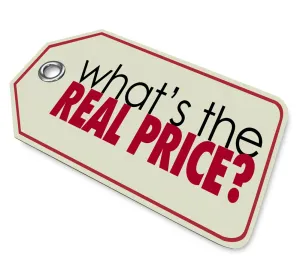We review over a hundred small business transactions each year. Buying a business can be a complicated process, especially for a first-time business owner. Entrepreneurship through acquisition “ETA” has become increasingly popular, but we wanted to share some insights to assist buyers in negotiating a fair price.
1. Add-backs
Seller add-backs for personal or discretionary spending is a murky area. An an appraiser, some add backs make sense and others do not.
We’ve seen a cattle business expensed through an HVAC company.
We’ve seen a lease for a Porsche and a leadership meeting in Hawaii.
We’ve a dozen Rolex watches purchased using business funds.
It is important to scrutinize and verify all of these add-backs. Sellers may try to add back marketing expenses which we would argue likely contributed to sales for the period. Also, ensure that the add-backs line up with the financials statements. If a seller is trying to add-back $30,000 in travel expenses, but the travel expense account only had $10,000 in expenses, something is off.
There is also a school of thought that a seller shouldn’t get the benefit of reporting lower taxable income for years only to recoup the benefit through add-backs at the time of sale. As the proverb goes, it is “having your cake and eating it too.” This idea is unpopular amongst sellers and brokers, but we wanted to raise awareness.
Verify add-backs and if you get any push-back, consider it a red flag or deal killer.
Financial statements for small businesses are notoriously suspect.
Before digging into the numbers, ask about the financial reporting process. Who sends out invoices and who receives payment? How frequently are invoices sent out? How are business expenses handled? Are there any controls in the place? Who does the bookkeeping and with what frequency? Does the CPA clean up the financials or simply record the data on a tax form?
We’ve seen some broker memos that simply list “Seller represented financials” with no further financial statements upon request. Red flag and deal killer.
When analyzing the financial statements, look for customer concentrations and consider the transferrability of the relationships. Is the chart of accounts consistent year after year or does it change frequently? Are there expense items that seem inconsistent with historical periods or industry benchmarks?
Part of the risk in the quality of earnings is in the process of recording the transactions. It is important to understand how the numbers come together. Through this process, you may even identify opportunities to boost cash flow under new leadership through more efficient collection and disbursement procedures.
3. Working Capital
Working capital is defined as Current Assets – Current Liabilities from an accounting perspective. In M&A, we’re really talking about Accounts Receivable, Inventory, and Accounts Payable.
A business broker will tell you that working capital is not typically included in small business transactions. An appraiser will tell you that working capital is an integral part of the value of a business.
There seems to be a magical threshold in which working capital becomes part of the transaction, usually around $750,000 or $1,000,000 in enterprise value. There is no logical explanation for why working capital is not included at smaller levels other than buyers not requesting it.
Liquor stores are commonly sold as a multiple of SDE plus inventory. SDE, or Seller’s Discretionary Earnings, is defined as net income + owner compensation + personal/discretionary expenses. For context, most businesses are listed for 2 or 3 times SDE. We push back on the suggestion that inventory is separate and distinct from the value of the business.
What is a liquor store without beer, wine, and liquor?
What is a bike shop without bicycles?
Answer: A vacant space.
For businesses to be marketed and traded using a multiple of cash flow (SDE) without the underlying source of that cash flow (inventory) is illogical. Buyers would be double-paying for the asset. Do not do this.
Working capital also includes accounts receivable. Accounts receivable are generated when you provide a good or service to a customer and agree that the customer will pay you later (typically 30 or 60 days). Accounts receivable can strain cash flow in a business if not monitored properly. A business is incurring expenses up front and waiting 30-60 days to receive payment. Payroll is every two weeks or twice a month, and your employees must be paid. Suppliers must be paid.
Often, sellers will try to negotiate all rights to accounts receivable, leaving the buyer with a cash crunch right from the start. Again, this is illogical. A buyer and seller should agree upon a “peg balance” of working capital based on current working capital levels and seasonality. SBA lenders will often try to step in and fill this void with additional working capital financing. However, it shouldn’t be necessary. The value of the business is incumbent upon cash flow, and working capital and access to cash flows are the vital. If working capital is not included, the purchase price of the business should be reduced accordingly.
Small business buyers often miss this point, but rest assured private equity firms do not. Require working capital in the deal, if applicable.
Conclusion:
There are infinite risks to buying and managing a small business. It is likely you understand that fact if you’ve read through this entire article. Until the transaction is closed, however, that risk belongs to the seller. We encourage buyers to be thorough in their research, be confident in their requests for information, and don’t overpay for inventory or working capital.
Multiples of SDE or EBITDA can be helpful to gain a rough understanding of value, but, in the end they are just arbitrary numbers based on previous transactions that may be unrelated to your target acquisition. We recommend creating projections based on how the business would operate under your ownership. Determine what the expected operating income would be (Revenue less COGS less Operating Expenses) and multiply this number by 4. Then, multiply it by 5. This will give you a good range of value for the business. This is the same process used by appraisers when we discount cash flows to present value at discount rates of 20-25%. The math is roughly the same.
Mark Ahern started Amp Business Valuations in late 2020. He has a background in financial services and a passion for helping small businesses. Mark was formally trained in commercial real estate and C&I credit. He also held posts in retail banking, retail mortgage, and loan operations. Mark earned an MBA from DePaul University and teaches Business Finance at Regis University.


